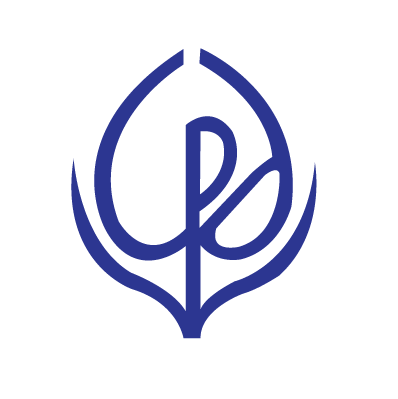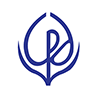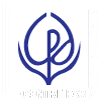Originally posted in The Financial Express on 29 May 2025
As the current fiscal year draws to a close in June 2025, the interim government is set to present the national budget for fiscal year (FY) 2025-26 on June 2, 2025. The underlying objective of the upcoming budget will be to bring stability to the economy, as Bangladesh currently faces multiple challenges. Public finance is strained by limited revenue growth, rising borrowing costs, and high operating expenditures. Persistent high inflation has eroded the purchasing power of low-income groups. The banking sector struggles with high non-performing loans and weak governance, needing structural reforms and regulatory oversight. The external sector shows recovery with strong remittances and exports, but risks persist from external debt and a market driven exchange rate. The capital market underperforms amid administrative delays and low investor confidence. The power and energy sector suffers from inefficiencies, inadequate infrastructure investment, and a lack of diversification of energy sources.
In this context, the Centre for Policy Dialogue (CPD) has prepared a comprehensive report under its flagship programme titled Independent Review of Bangladesh’s Development (IRBD). The report presents an analysis of the economy during the current fiscal year based on the latest available data. The IRBD explores a few selected sectors, such as public finance, inflation, banking sector, external sector, capital market and power and energy sector. These areas reflect the core vulnerabilities currently confronting the country and are essential to address for achieving macroeconomic stability and sustainable growth. CPD offers a set of recommendations for each sector discussed in this reading of the IRBD. This article, based on the IRBD, focuses on public finance.
DATA LIMITATIONS: The issue of the timely availability of fiscal data continues to be a major constraining factor when it comes to the analysis of the public finance situation in Bangladesh. As of May 2025, data reported by the Ministry of Finance (MoF) is available only until January 2025. While alternative sources such as the National Board of Revenue (NBR), Implementation Monitoring and Evaluation Division (IMED), and Bangladesh Bank can be more timely, they lack the accuracy and congruency of the MoF data. Fragmented reporting is also an issue since no alternative sources provide a holistic picture of the fiscal scenario, such as the MoF. The present analyses utilise data from all the aforementioned entities but might be constricted in some instances owing to data limitations.
REVENUE MOBILISATION: As reported by the MoF, total revenue collection posted a 5.3 per cent growth during the July-January period of FY2025. This is a considerable decline from the corresponding figure of FY2024 (13.7 per cent). This implies that a whopping 64.6 per cent growth will be required during the remainder of FY2025 if the annual target for revenue mobilisation is to be achieved.
Without a doubt, this is a highly unlikely prospect. Indeed, in March 2025, CPD projected that the revenue shortfall could reach approximately Tk 1050 billion at the end of FY2025. The growth in revenue mobilisation during the July-January FY2025 period was primarily driven by a sharp increase in government earnings from interest as well as by enhanced collection of income tax.
According to the NBR data, tax collected by the NBR increased by a meagre 2.8 per cent during the July-March period of FY2025, whereas the corresponding figure of FY2024 was 10.7 per cent. The growth achieved so far in FY2025 can be attributed primarily to the enhanced collection of income tax. The slowdown in the implementation of the Annual Development Programme (ADP) as well as the downturn in overall economic activity have perhaps contributed to the poor collection of value added tax (VAT) and supplementary duty (SD) at the local level despite the high level of inflation and increased VAT and SD rates for nearly 90 items. Given the present context, whether the upcoming International Monetary Fund (IMF) conditionalities concerning revenue can be met remains a question.
The debacle concerning the abolishment of NBR has thankfully settled for the time being, thanks to the press release issued by the MoF on May 25, 2025. However, there is no doubt that repetition of such an instance will negatively impact the economy, particularly in the case of revenue mobilisation.
PUBLIC EXPENDITURE: As MoF data shows, overall utilisation of budget stood at 34.5 per cent during the July-January period of FY2025 (MoF, 2025). The corresponding figure for FY2024 was lower – at 32.4 per cent.
ADP implementation was also on the lower side – only 18.4 per cent financial progress was achieved during the first seven months of FY2025 (the corresponding figure for FY2024 was 20.0 per cent). Besides the political turmoil during July-August 2024, the interim government’s cautious approach in terms of project approval and fund disbursement, and increased scrutiny of expenditure allocations may have contributed to the slow implementation of ADP. On the contrary, non-ADP expenditure showed an upward trajectory. During July-January of FY2025, utilisation of the non-ADP budget reached 42.5 per cent while the corresponding
figure for the previous fiscal year was 38.9 per cent. This implies that nearly an additional Tk 320 billion was required to conduct the non-ADP activities of the budget. Among the components of non-ADP expenditure, subsidies and current transfers were the major drivers of the uptick, accounting for nearly 61 per cent of the additional non-ADP expenditure. As the World Bank reported, this included increased incentive payments for remittances, food subsidies, and payments to clear arrears to the Bangladesh Power Development Board (BPDB).
Expenditure owing to domestic interest payment also increased substantially, with the corresponding share in additional non-ADP expenditure reaching 37.6 per cent.
The proposal to introduce a dearness allowance for government employees by replacing the existing 5 per cent special incentive from FY2026 comes at a curious time. As has been reported in the media, this move will entail an increase in public expenditure by nearly Tk 70 billion. While this allowance will provide some respite to the public servants during times of high prices of necessities, apprehensions remain as to whether this move will stoke inflation further. There are still concerns about how much attention the rest of the workforce-especially those working in low-paying private jobs and the informal sector-will receive. The timing and nature of this allowance also call into doubt the government’s priorities. It needs to be observed whether this move was initiated to appease and maintain support from the government employees, particularly those in the bureaucracy.
The Ministry of Planning’s IMED provides a more up-to-date picture concerning the ADP implementation scenario. According to IMED data, the ADP implementation rate against the original budget allocation reached 32.8 per cent during July-April of FY2025 – the lowest in the last ten years.
Within the components of ADP, utilisation of both ‘Taka’ (the part of ADP that is financed by domestic resources), and project aid reached their historical lows during the first ten months of FY2025. While the implementation rate of the former reached 31.1per cent, for the latter this rate was 35.6 per cent. The corresponding rates for FY2024 were 42.0 per cent and 51.6 per cent, respectively. As mentioned in the previous section, the slowdown in ADP implementation has adversely impacted revenue mobilisation and may have negative connotations for the achievement of a healthy economic growth.
Of the original ADP allocation for FY2025, the top ten ministries/divisions receiving the highest allocation account for 66.6 per cent of the total (the corresponding figure for FY2024 was 70.2 per cent). Among the ten, the ADP implementation of five was below the average level. These include the Road Transport and Highways Division, the Ministry of Railway, the Health Services Division, the Secondary and Higher Education Division, and the Ministry of Water Transport. As can be seen, the trend of poor ADP implementation in the education and health sectors has continued in FY2025. It is also a matter of concern that the average ADP implementation rate of government ministries/divisions which reside outside the top ten has almost halved-from 42.4 per cent during July-April FY2024 to 21.7 per cent during the corresponding period of FY2025.
DEFICIT AND ITS FINANCING: According to the MoF data, the budget deficit increased substantially during the July-January period of FY2025. Budget deficit (excluding grants) stood at Tk 383.93 billion at the end of January 2025. The corresponding figure for FY2024 was Tk 222.44 billion. This is perhaps attributable to the combination of marginal increase in revenue collection and substantial increases in non-ADP expenditure.
Government’s net borrowing from foreign sources increased only marginally during the first seven months of FY2025. Although higher inflow of foreign finds was observed, this was offset by the higher amortisation of existing foreign loans.
Government net borrowing from the banking system stood at Tk. 407.86 billion (29.7 per cent of the budgetary target) during July-January of FY2025. On the other hand Tk 236.27 billion was borrowed from the banking system during the corresponding period of FY2024. This increase in bank borrowing by the government may have limited the availability of funds for the private sector. Government net borrowing from non-banking sources increased by Tk. 16.93 billion during July-January of FY2025. Within the non-banking sources, the net sale of National Savings Certificates (NSCs) experienced a sharp rise. During the July-January period of FY2025, the government sold NSCs worth (net) Tk 40.67 billion. On the contrary, the government repaid (net) Tk 73.10 billion to the people during the same period of the previous fiscal year. Overall, the dependency on domestic sources for financing the budget deficit increased during the first seven months of FY2025. Also, this dependency on high-interest rate domestic sources might have adverse implications for the debt servicing liabilities of the coming days.
THE PATH AHEAD: Based on the discussion so far, it becomes evident that the issue of limited fiscal space will persist in the foreseeable future. The extent of this will be determined by the capacity to mobilise additional revenue. To this end, finding newer avenues, enhancing the efficiency of existing efforts, and sealing leakages should all receive due importance. For instance, as part of finding newer avenues, initiatives such as taxing the growing digital economy and meaningful taxation of wealth and property can be considered. When it comes to enhancing the efficiency of existing efforts, analysing the current tax exemptions in-depth with thorough data analysis has become an urgency. As part of sealing the leakages, curbing illicit financial flows (IFF), limiting tax evasion, and tax avoidance should be high on the government’s agenda. While efforts to mobilise additional revenue will be there, it needs to be taken into cognisance that some revenue losses will occur owing to the initiatives taken in view of Bangladesh’s upcoming LDC graduation. Hence, a balancing game will need to be played. The latest rounds of discussions with the IMF have shown how difficult getting budget support can be. Receiving foreign financing through the channel of ADP is contingent upon the government’s ability to design and implement projects. However, swift improvement in these areas will be a difficult proposition. In this backdrop, the onus of deficit financing is likely to fall onto bank borrowings. However, careful calibration will be required if private sector borrowings are not to be crowded out, given the commercial banks’ liquidity situation and the government’s decision not to borrow from the central bank.
The public expenditure framework will need to address the persistently high prices of necessities. It needs to be ensured that the low and limited income, vulnerable and disadvantaged groups are supported through both revenue and expenditure centric fiscal measures. In the area of ADP, the cautious approach in terms of project approval and fund disbursement, and increased scrutiny of expenditure allocations need to be continued. It needs to be ensured that the current austerity measures, be them part of prudent macroeconomic management or IMF conditionalities, have minimal impact on the social safety net, the health and education sectors, agriculture, and small and medium-sized enterprises (SMEs). The central focus of public expenditure management in the coming days needs to be the enhancement of value for money, given the limited fiscal space.
Dr Fahmida Khatun, Executive Director, Centre for Policy Dialogue (CPD); Professor Mustafizur Rahman, Distinguished Fellow, CPD; Dr Khondaker Golam Moazzem, Research Director, CPD; Mr Muntaseer Kamal and Mr Syed Yusuf Saadat, Research Fellows, CPD. moazzem@cpd.org.bd; avra@cpd.org.bd
[Abu Saleh Md Shamim Alam Shibly and Tamim Ahmed, Senior Research Associates; Afrin Mahbub, Preetilata Khondaker Huq, Anindita Islam, Md Mehadi Hasan Shamim, Nuzaira Zareen, Ayesha Suhaima Rab, Safrina Kamal, Khaled Al Faruque, Md. Imran Nazir, and Tanbin Alam Chowdhury, Programme Associates; and Syeda Safia Zahid, Research Intern of CPD provide research assistance.]



